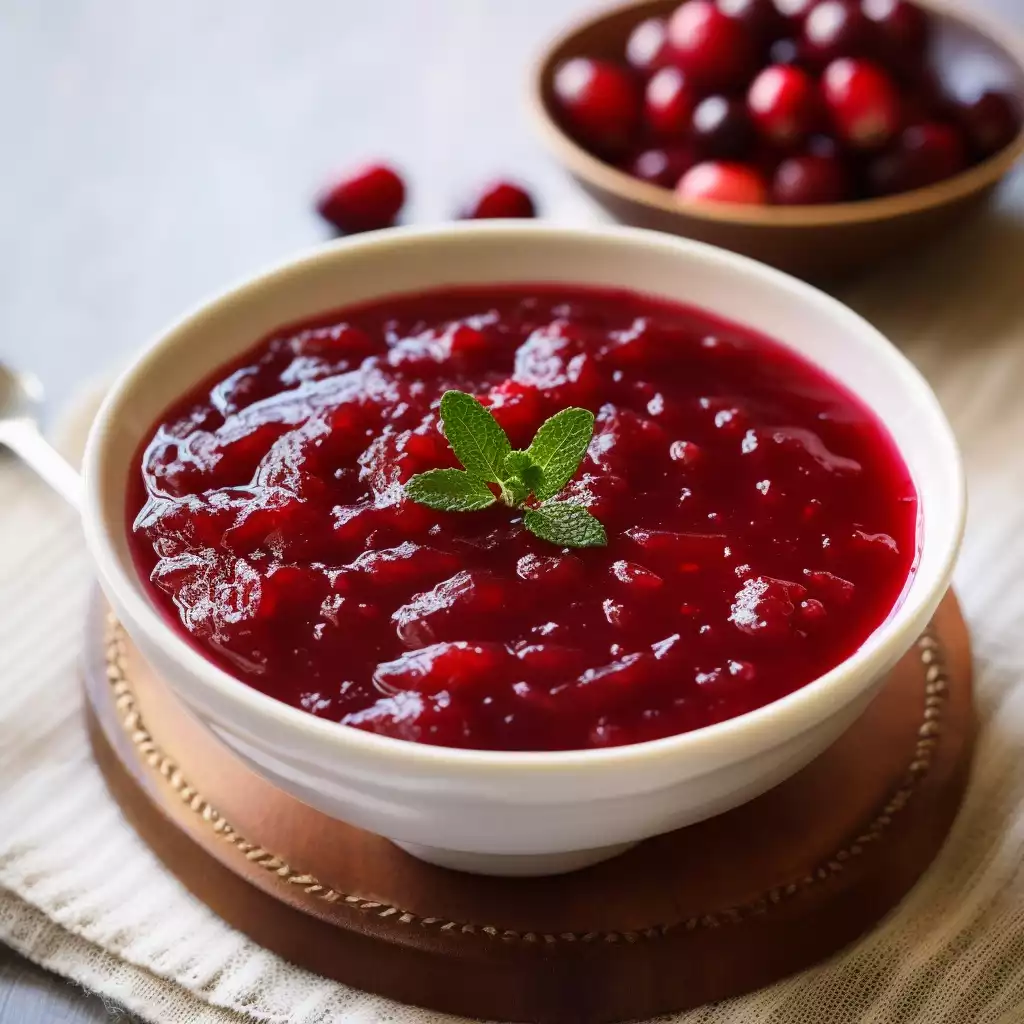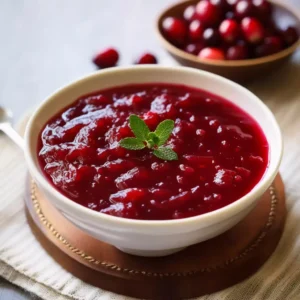
Cranberry sauce, a classic accompaniment to holiday feasts, brings a burst of tartness and sweetness to the table. Originating from Native American traditions, this vibrant sauce has become a staple in Thanksgiving and Christmas meals around the world.
Despite its simplicity, crafting the perfect cranberry sauce requires just the right balance of sweetness and tanginess, making it a delightful addition to any meal.
While some may find the prospect of making cranberry sauce daunting, fear not! This recipe is wonderfully straightforward, requiring just a handful of ingredients and minimal effort.
With fresh cranberries, a hint of citrus, and a touch of sweetness, you’ll create a sauce that perfectly complements roasted meats, turkey, or even as a topping for desserts.
Expert Tip: Don’t forget to zest the orange before juicing it; the zest adds a punch of citrus flavor to the sauce.
Cranberries: Bursting with tart flavor and vibrant color, cranberries are the star of this sauce. Their natural acidity adds a delightful tanginess that balances the sweetness of the dish.
Sugar: Sweetness is essential to mellow out the tartness of the cranberries, creating a harmonious balance of flavors in the sauce.
Orange: Both the zest and juice of an orange contribute citrusy brightness to the cranberry sauce, enhancing its complexity and depth of flavor.
Expert Tip: Experiment with adding spices like cinnamon, cloves, or ginger for a unique flavor twist.
Expert Tip: For a thicker sauce, simmer the cranberries for a longer duration until the desired consistency is achieved.
Yes, frozen cranberries can be used as a substitute for fresh ones. Just be sure to thaw them before using in the recipe.
Homemade cranberry sauce can be stored in the refrigerator for up to 2 weeks in an airtight container.
Absolutely! Taste the sauce as it cooks and adjust the sweetness by adding more sugar if needed.
Yes, cranberry sauce can be made ahead of time and stored in the refrigerator until ready to serve.
Allowing the cranberry sauce to cool helps it thicken and allows the flavors to meld together. It’s best served chilled or at room temperature.
Here are some more recipes for you to enjoy! If you my recipes don’t forget to rate and leave a comment.
If you have any recipe suggestions, please do not hesitate to ask me. A great way to stay in contact with me is through Instagram, Facebook, Twitter and YouTube. Don’t forget to tag me @CookwithNabeela in your recipe photos!

Subscribe now to receive my latest recipes directly in your inbox. Stay up-to-date and never miss out!

I love to cook! I want to share with you my favourite, delicious family-friendly recipes. I want to inspire you to create fantastic food for your family every day.
Add your first comment to this post